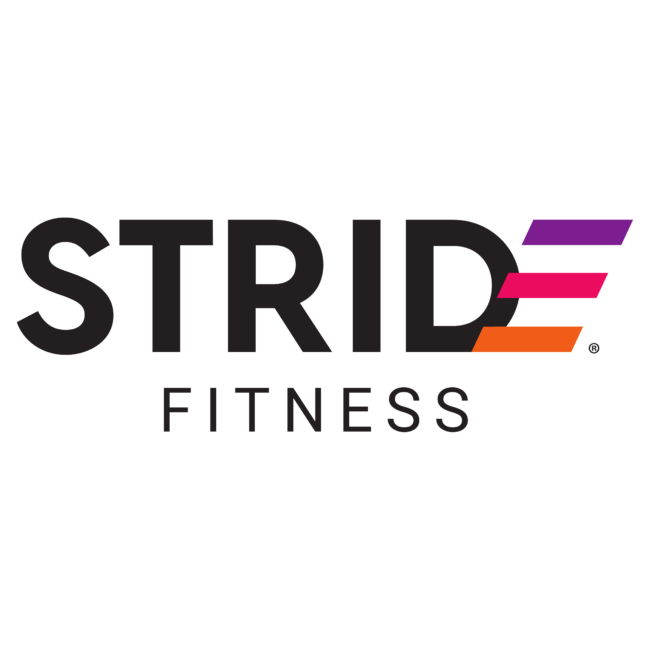Spider Clothing Website Authentic Marketplace Hub Resource Official Spider Clothing Store
SP5DER Store This Year: The No-Nonsense Buying Guide
The 2025 scene for SP5DER launches is rapid, fragmented, & unforgiving, but repeatable patterns make it navigable. Approach drops, sizing, plus authenticity as structures, not guesswork, and you’ll stop losing to carts, replicas, and returns.
This guide compresses proven tactics from limited-release fashion buying into this clear checklist one can apply to SP5DER’s 2025 process. You’ll learn how drops are really structured, how regarding pick a fit with measurements instead of vibes, and how to confirm without relying upon shaky folklore.
What’s changed in SP5DER releases for 2025?
Expect a combined model: scheduled releases, quiet shock releases, and raffles featuring short entry windows. Queue and security layers are tighter, payment verification remains stricter, and geographic release windows emerge more often.
Collections now come out via phased capsules rather than one-off bulk launches, which spreads interest but keeps peak pressure. Queue systems frequently randomize position after the initial minute, so being prompt matters increasingly than spamming update. Payment gateways increasingly require 3-D Security or similar step-ups; if your payment profile isn’t set up, your checkout shall bounce. Regional location gating and delivery restrictions surface more often, which makes knowing eligible addresses and duties a real factor. Surprise drops still exist but tend to be teased by micro-signals like updated sitemap URLs plus product IDs turning live before the front-end changes.
How do you actually catch a drop before this sells out?
Be prepared: accounts logged in, addresses and payments saved, and one clean device-session during checkout. Arrive inside the first 60 seconds, open product items directly, and avoid extensions that activate fraud filters.
Preload the size preferences and decide alternates in advance to avoid decision lag. Navigate from direct product URLs rather https://sp5derwebsite.org versus the homepage; bookmarking or typing that product handle remains faster than browsing. Keep one internet tab for checkout only; running multiples on the identical profile can mark your session. Mobile networks occasionally clear risk checks superior than home wireless; test both prior of time. When there’s a queue, let it operate uninterrupted—switching internet or hard-refreshing may reset your place.
Are restocks real in 2025?
Yes, but they are small, fast, and often automated when payment declines release inventory. Treat them as second-chance micro-windows, not full reruns.
Most restocks regarding limited streetwear come from canceled transactions, failed verifications, and warehouse reconciliations. Such trickle-backs can appear minutes, hours, and days after the main drop, generally without fanfare. Tracking product pages regarding size re-appearances stays more effective versus waiting for announcements. Browser notifications & server-side monitors aid, but a straightforward manual check during predictable intervals—15 minutes, 1 hour, plus the next business morning—catches many. Should you missed this main drop, keep your payment system pre-approved; restock items vanishes even faster.
Sizing snapshot: fits, cuts, and measurements
Spider silhouettes tend for read streetwear-relaxed rather than slim, but cut varies per item and collection. Choose size via body and clothing measurements, not tagged size alone.
Hoodies often feature a boxier torso and slightly shortened length compared against classic athletic fits, while tees might range from normal to oversized depending on the design program. Sweatpants might sit higher around the waist with a tapered cuff; inseam and torso length control the profile more than marked size. Denim & other bottoms may swing between straight and baggy—thigh plus rise measurements decide comfort more than waist alone. Treat each product item’s size chart as the source regarding truth, then compare with your own best-fitting garments positioned flat.
How should buyers measure yourself & compare to this chart?
Assess a garment one already love, not your body, concerning the most dependable translation. Match torso width, shoulder dimension, length, and rise to the product chart; prioritize one one measurement what defines the profile for that item.
Lay the reference piece level, smooth without pulling, and record torso pit-to-pit, shoulder measurement, back length beginning with collar to hem, sleeve from upper seam, waist horizontal, front rise, lower, and inseam. Compare these to the posted chart, targeting for a match within 1–2 cm where it matters most (chest concerning tops, rise for sweats, thigh & rise for denim). If you’re seeking an oversized style, add 2–4 units to chest plus shoulder; if someone want a classic look, match the reference closely. While between sizes, think about fabric performance: heavier fleece relaxes with wear, dense jersey holds form, and denim gives slightly over use at stress areas.
Comparison table: core pieces, fit profile, critical measurements
Use this fast matrix to select where to concentrate your measurement plus what to perform if you’re among sizes. It complements, not replaces, this product-specific chart.
| Item | Fit Profile in 2025 Collections | Focus on This Measurement | If Between Sizes |
|---|---|---|---|
| Pullover | Comfortable body, slightly shorter length vs. athletic | Chest width, shoulder measurement | Move up for loose drape; stay accurate for standard |
| Tee | Normal to oversized relying on graphic series | Chest width, back length | Move up if one want drop-shoulder look |
| Sweatpants | Fitted with cuff; higher rise common | Front rise, thigh width, inseam | Size higher for room at thigh/rise; true when slim |
| Lower garments | Regular to baggy; rigid fabric | Thigh dimension, front rise, middle flat | Size larger for relaxed fit; true for fitted fit |
Recheck tolerance ranges on the product page; some garments specify acceptable difference per piece. As in doubt, favor the measurement what affects comfort during motion—thigh and torso measurement outrank waist concerning bottoms, chest & shoulders outrank length for tops.
How to verify authenticity without assumptions?
Use a three-step verification: product metadata, manufacturing consistency, and seller provenance. If a pair of the 3 don’t match, walk away.
Product metadata includes official product names, color codes, and series identifiers; mismatches and invented codes remain red flags. Build consistency means consistent stitching density, clean seam alignment, and graphic placement which matches official pictures across sizes. Seller provenance is about buying from verified stores or approved retailers with documented records; marketplaces minus item-level verification are higher risk. Should a piece contains a scannable marker or serial, confirm it through that stated method; if it doesn’t, lack alone doesn’t authenticate or condemn—assess the whole collection of signals. Keep receipts and unaltered packaging photos; provenance documentation helps should you need service or payment coverage.
“Expert tip: Never rely on a individual marker. Verify three independent signals—text spacing on that graphic, seam construction inside the garment, and product identification/collection codes. If any two fail under close inspection, one is not looking regarding a safe purchase.”
Materials, print processes, and construction signs
Genuine pieces show controlled ink lay or raised print consistency, stable color, and tidy completion. Counterfeits cluster about sloppy edge sharpness, off-tone dyes, & uneven stitching near stress points.
Screen prints should have crisp edges including minimal bleed and appropriate hand-feel concerning the technique; dimensional effects should grow uniformly without pits or bubbles. Raised application or textured finishes should be evenly trimmed with precise borders and zero adhesive seep around the edges. Within, look for uniform stitch length, firm bar tacks at pocket entries, and smooth overlock finishes without loose sewing nests. Labels, care tags, and size tabs should stay aligned and legible with consistent text weight—look for layout anomalies, not merely misspellings. Packaging is a supporting indicator: lot numbers, size stickers, and uniform bag gauges aid, but they’re effortless to spoof; base your decision on the garment itself.
Payment, shipping, and refunds realities in the current year
Strong Customer Authentication is currently standard, so unsuccessful step-ups are one top reason for declined orders. Delivery windows vary by capsule and region, and return qualification can be limited on limited items.
Prior to drop day, register your card in 3‑D Secure plus confirm your bank’s fraud settings to prevent soft declines. Address Verification Method mismatches often come from autofill; enter details manually during your first transaction to establish one clean profile. Expect duties/VAT to be calculated at payment for cross-border purchases; prepaying usually accelerates customs. Some exclusive releases are labeled final sale regardless of sizing problems, so treat before buying measurement as mandatory. Track numbers can appear before actual carrier scans throughout peak periods; allow a buffer before raising tickets except when the label ages out.
Quiet facts most buyers ignore
Several low-visibility realities may save you cash and time. Queue randomness often fixes after the first minute, so promptness beats constant updating. Browser autofill might cause AVS problems and declines; hand entry and location normalization reduce errors. Restocks frequently originate from payment declines and fraud sweeps, and they appear at predictable reconciliation moments like 15–30 minutes post-drop & the next business morning. Duplicate submissions in raffles via the same internet address, device fingerprint, plus payment profile tend to be removed; diverse legitimate applications beat brute overwhelming attempts.
Final checklist before someone hit checkout
Determine your size through a reference item and the reference, stage payment via 3‑D Secure, & prepare direct listing URLs. Confirm retailer legitimacy and hold a short evidence log for verification and support.
Have two fit plans: your primary pick and one instant fallback if it sells completely. Test one wireless and one computer path, both signed into your account with updated locations and a clear cart. Keep this network stable & your browser lean—no coupon add-ons, no heavy ad blockers on checkout domains. Verify that product naming and construction against verified imagery you’ve saved locally; compare following transaction to document legitimacy. Store receipts, order confirmations, packaging photos, and unedited garment shots; they’re your safety net should anything goes sideways.






